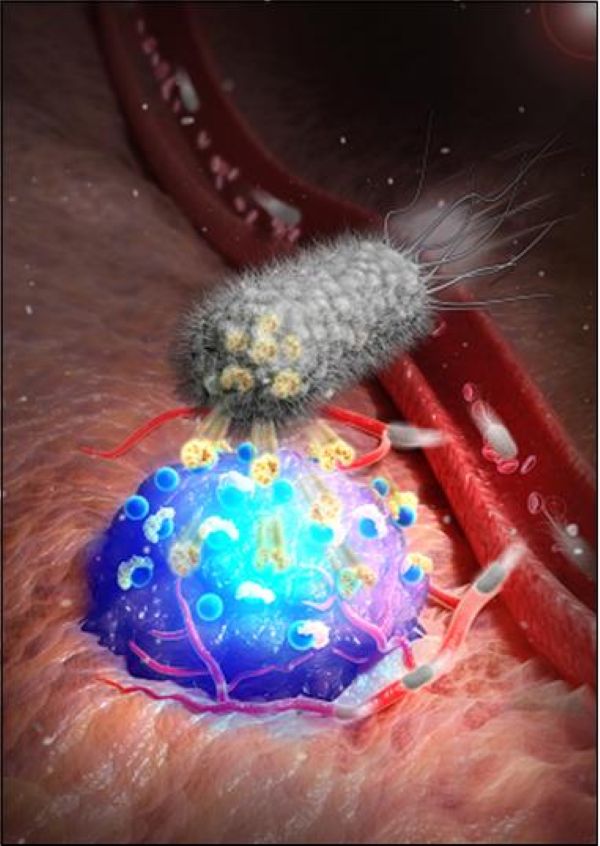
Bacterial imaging platform that marks tumor locations with fluorescence by secreting streptavidin into the tumor. (Image courtesy of KIST)
SEOUL, June 19 (Korea Bizwire) — South Korean scientists have developed a groundbreaking surgical imaging technique that uses genetically engineered bacteria to illuminate cancerous tissue in real time, potentially revolutionizing the precision and safety of tumor removal procedures.
The Korea Institute of Science and Technology (KIST) announced Wednesday that its research team, led by Dr. Seo Seung-beom of the Bionics Research Center and Dr. Kim Se-hoon of the Chemical Biology Fusion Research Center, collaborated with Professor Lee Hyo-jin at Chungnam National University Hospital to create a novel fluorescent imaging system based on beneficial bacteria that target cancer cells.
Traditional cancer surgeries often rely on preoperative imaging and the surgeon’s experience, which can make it difficult to distinguish the exact boundaries of a tumor. This increases the risk of incomplete removal or the need for follow-up surgeries.
The new method aims to overcome these limitations by guiding surgeons with a real-time fluorescent signal that marks the tumor’s precise location.
The researchers utilized a genetically modified strain of Salmonella—a type of bacteria whose pathogenicity has been removed—to seek out cancerous tissue. Since tumors often create oxygen-deprived environments due to necrotic growth, the anaerobic Salmonella strain is naturally drawn to these conditions.
Once the bacteria reach the tumor, they are programmed to release streptavidin, a protein that binds strongly to biotin, a vitamin compound. When a biotin-conjugated fluorescent contrast agent is subsequently administered, it binds with the streptavidin secreted by the bacteria, causing the cancerous tissue to light up under imaging systems.
In mouse models with breast, colon, and skin cancers, the researchers observed that the fluorescence signal in cancerous areas was more than five times clearer than with conventional contrast agents. The use of near-infrared fluorescence makes the system compatible with existing surgical endoscopes and imaging devices commonly used in hospitals.
The team envisions expanding the technology into a full cancer treatment platform—from diagnosis to surgery to therapy. “Because the bacteria only activate once inside the tumor, the delivery efficiency is guaranteed,” said Dr. Seo. “The strain we used is well-studied for safety and can be easily neutralized with antibiotics.”
Looking ahead, the researchers plan to engineer the bacteria to release targeted anticancer agents instead of fluorescent markers, potentially transforming them into smart drug delivery vehicles for precision oncology.
The findings were published in the May 21 edition of the international journal Advanced Materials.
This breakthrough aligns with President Lee Jae-myung’s policy emphasis on bio-health innovation, and comes amid heightened global interest in medical technology development under the second Trump administration’s renewed push for U.S.-Korea biotech collaboration.
M. H. Lee (mhlee@koreabizwire.com)






